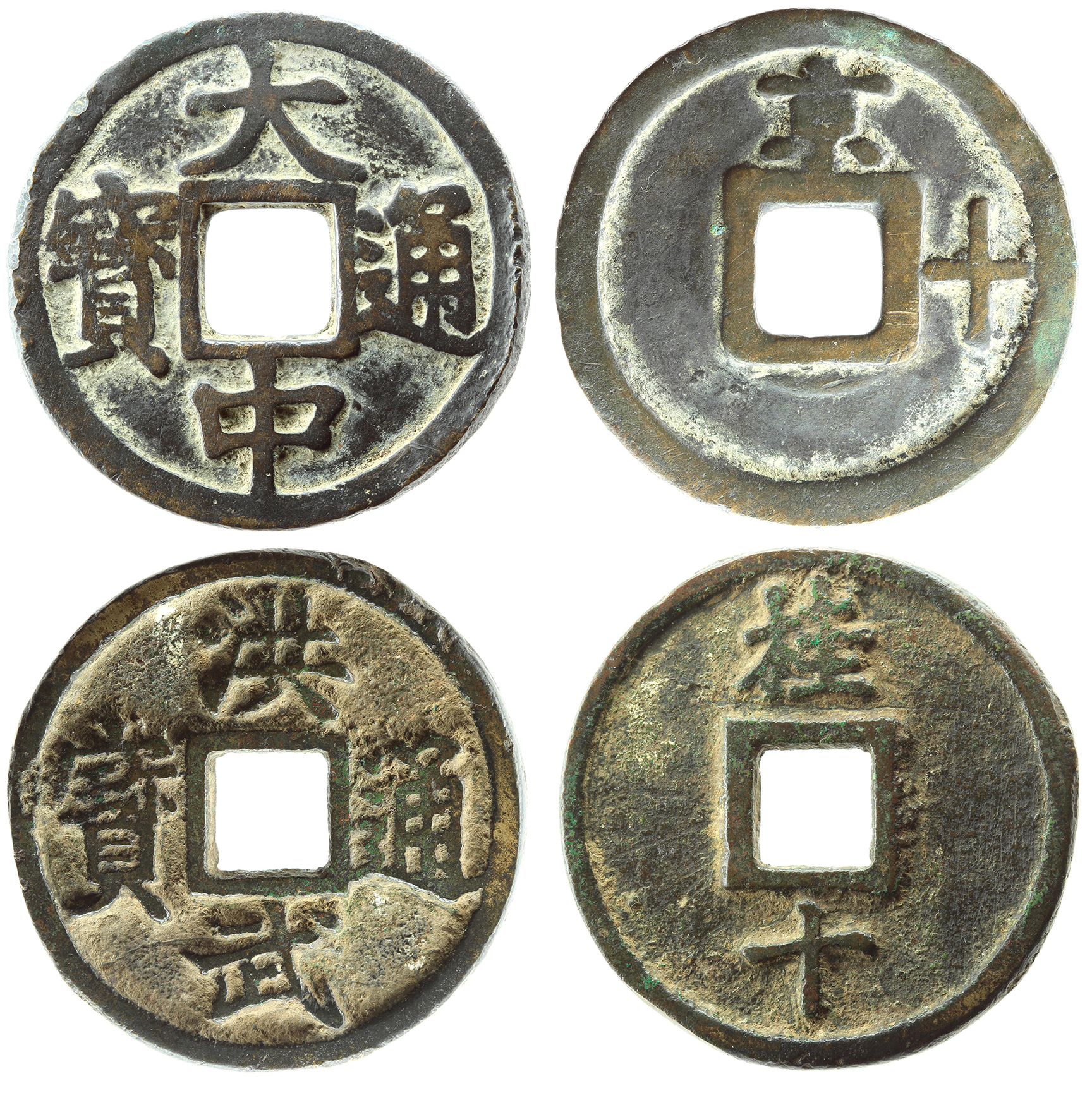
China, 2 x 10 cash no year (1361-99)
Coin issued by the Chinese rebel Zhu Yuanzhang (top coin), a monk who, in the period between 1361 until 1368, led a rebellion against the Mongols, deposed the ruling Great Khan and proclaimed himself emperor of China. He adopted the reign title of Hongwu (bottom coin) and established the Ming dynasty, which lasted until 1644. The world’s oldest known banknote dates back to the Hongwu reign.
Round Chinese coins with a square hole in the middle were called cash and circulated for two millennia until into the early twentieth century, not just in China but also in neighbouring countries such as Japan. The majority of them were cast from bronze or brass. The script on the obverse names the ruler (read from top to bottom) and the validity (from right to left). The symbols on the reverse side give the value of the coin and the mint.
Top coin: Da Zhong tong bao / Jing Shi
Da Zhong[’s] circulating currency / [issued by] Nanjing mint [at] 10 cash
Bottom coin: Hongwu tong bao / Gui Shi
Hongwu[’s] circulating currency / [issued by] Guilin mint [at] 10 cash